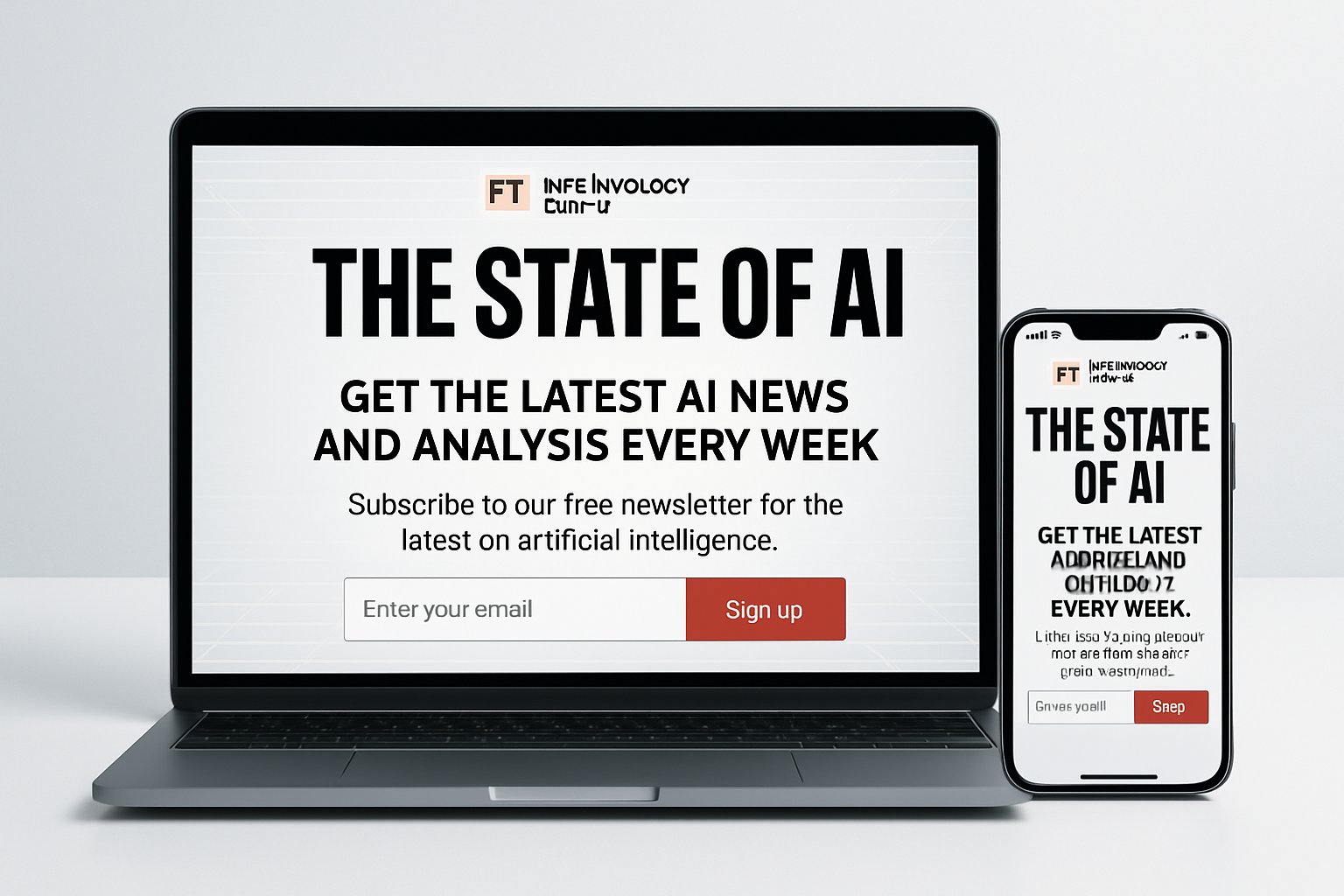
AI CERTS
23 hours ago
FT and MIT Tech Review Media Launch: The State of AI Newsletter
Consequently, subscribers will soon receive six weekly deep dives linking technical insight with geopolitical analysis. This article unpacks the partnership’s strategy, timeline, benefits, and potential challenges. Furthermore, it highlights why the initiative matters for decision-makers shaping AI policy and investment. In contrast, many single-brand newsletters cannot match combined editorial heft.
Meanwhile, publishers face rising costs and platform negotiations. This deep collaboration offers a scalable answer. Subsequently, we explore key factors driving the project. Moreover, the piece outlines practical actions for corporate communicators following the launch. Stay with us for evidence-based analysis and actionable recommendations.
Strategic Media Launch Partnership
Firstly, the collaboration fuses two respected editorial cultures. MIT Technology Review contributes rigorous technical context and intelligence grounded in academic networks. Conversely, the Financial Times offers broad Global Reporting across markets and policy forums. Together, the partners aim to capture readers who demand accuracy, speed, and business relevance.

Brooke Masters described the union as leveraging complementary strengths for sharper storytelling. Mat Honan echoed that view, citing the need for multiperspective scrutiny. Such remarks underline how the Media Launch seeks both scale and depth.
The partnership merges technical insight with geopolitical framing. Consequently, readers should anticipate nuanced yet accessible analysis. Next, we examine the timeline and publication cadence.
Timeline And Key Dates
Planning began months before the October press release. However, the public announcement landed on 29 October 2025. The first Newsletter edition appears on 3 November 2025. Substantial instalments publish every Monday through early December.
Sample topics already teased include energy constraints and AI warfare. Additionally, each piece pairs one reporter from each outlet. Consequently, each instalment balances local sources with international scope.
The schedule signals disciplined project management. Meanwhile, predictable cadence helps audiences build reading habits. We now assess potential audience scale and reach.
Audience Scale And Reach
Financial Times maintains roughly 1.5 million paying subscribers. MIT Technology Review distributes The Algorithm newsletter to hundreds of thousands of readers. Therefore, combined distribution channels promise outsized visibility for every instalment. Global Reporting chops meet niche technical communities within one subscription funnel. Key reach metrics illustrate the scale.
- FT paying subscribers: 1.5 million
- FT Group wider audience: up to 3 million
- Algorithm newsletter reach: several hundred thousand
Cross-promotion also taps MIT Research Labs, venture networks, and policy circles. In contrast, many standalone newsletters struggle to break professional silos. The Media Launch intends to convert casual readers into loyal subscribers across both brands.
Audience overlap boosts monetization opportunities. Consequently, both outlets expect higher lifetime value per subscriber. Editorial depth now deserves closer inspection.
Editorial Depth And Themes
Content pillars reflect high-stakes questions around energy, defence, and governance. Moreover, initial instalments feature US–China rivalry, grid pressure, and battlefield automation. Reporters will integrate proprietary data and domain intelligence to ground each argument. Such specialization counters superficial trend pieces common in fast news cycles.
Each pair of journalists negotiates angles that satisfy both technical rigor and investor curiosity. Additionally, editors coordinate vocabulary, ensuring accessible prose for multi-disciplinary audiences. That editorial choreography underscores why the Media Launch could set quality benchmarks.
Deep dives promise context absent from headlines. Therefore, policy makers may treat the series as briefing material. Yet every opportunity carries commercial pressures, as discussed next.
Commercial Drivers And Risks
Publishing economics increasingly depend on diversified revenue streams. Consequently, collaboration extends product shelf life and widens sponsor appeal. The Media Launch aligns with publisher negotiations over licensing content to AI platforms. However, paywalls still restrict casual traffic and ad impressions.
Licensing talks with OpenAI and Google raise questions about editorial independence. Nevertheless, joint branding may strengthen bargaining power against tech giants. Meanwhile, duplication risk persists because many outlets already run AI newsletters.
Financial upside appears promising yet uncertain. In contrast, reputational risk remains manageable through transparency. Industry reaction offers additional clues.
Industry Response So Far
Energy and defence analysts have cited early instalments in trade briefings. Moreover, several venture blogs linked the energy crunch report within hours. Press Gazette framed the Media Launch as part of broader partnership momentum. Consequently, peer newsrooms may accelerate similar alliances to maintain relevance.
Social media metrics echo this enthusiasm, showing above-average share rates. Additionally, academia applauded the series for bridging policy and laboratory perspectives. Global Reporting credibility clearly resonates beyond subscriber walls.
Positive coverage validates the joint strategy. Therefore, competitive response is likely imminent. Leaders should translate these insights into action.
Practical Takeaways For Leaders
Executives overseeing communications should benchmark this partnership when planning campaigns. Firstly, align technical intelligence with economic narratives to widen readership. Secondly, secure cross-channel promotion before any Media Launch to maximise momentum. Thirdly, create predictable publishing cadence to encourage habit formation among busy professionals.
Teams can also invest in staff training to sharpen AI sales conversations. Professionals can enhance skills with the AI Sales™ certification. Consequently, organisations gain informed sellers who convert AI features into client value.
Structured partnerships and certification create mutually reinforcing credibility loops. Meanwhile, leaders who act early secure audience trust and market share.
Conclusion And Next Steps
The FT and MIT Technology Review partnership illustrates how institutional strengths multiply when carefully aligned. Moreover, the six-part project showcases discipline in scheduling, audience targeting, and narrative clarity. The Media Launch already demonstrates traction across investor, policy, and technical circles. Consequently, rival publishers may pursue similar ventures, raising the competitive bar for AI coverage. Leaders should monitor the series, extract relevant intelligence, and replicate best practices inside their organisations. Finally, act now: subscribe, share insights, and pursue certifications that convert knowledge into business growth.



